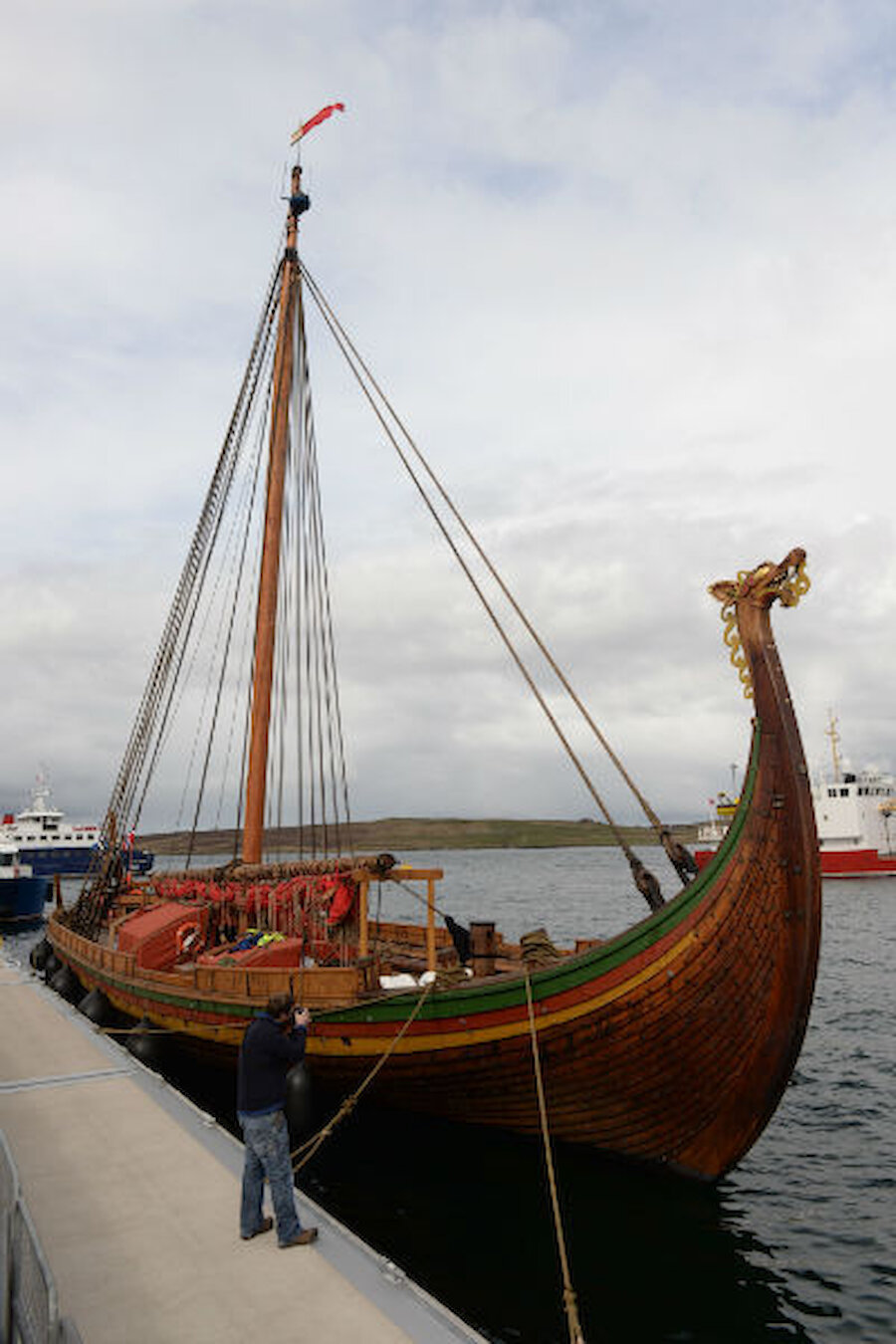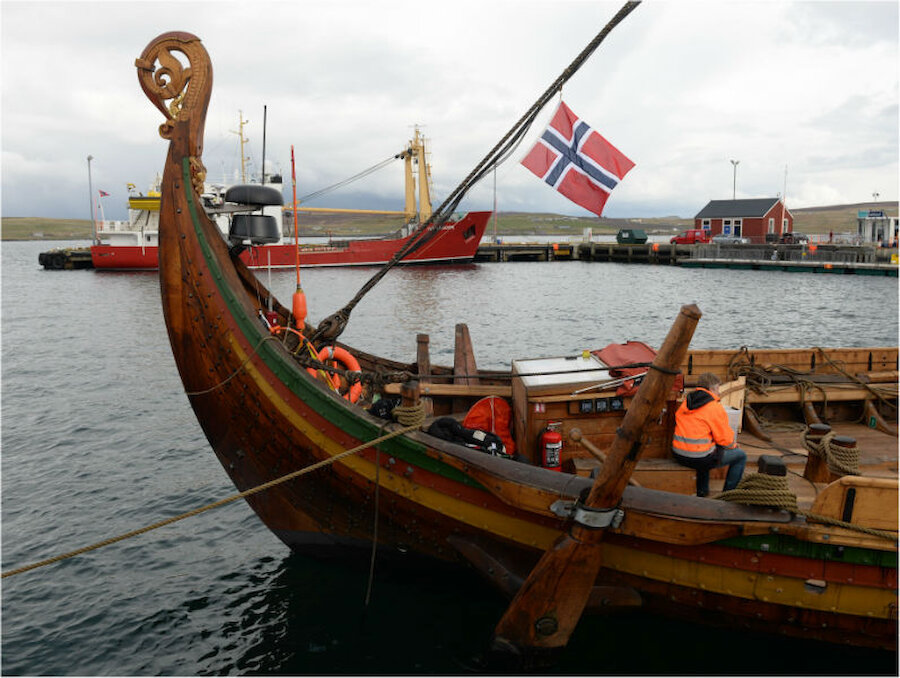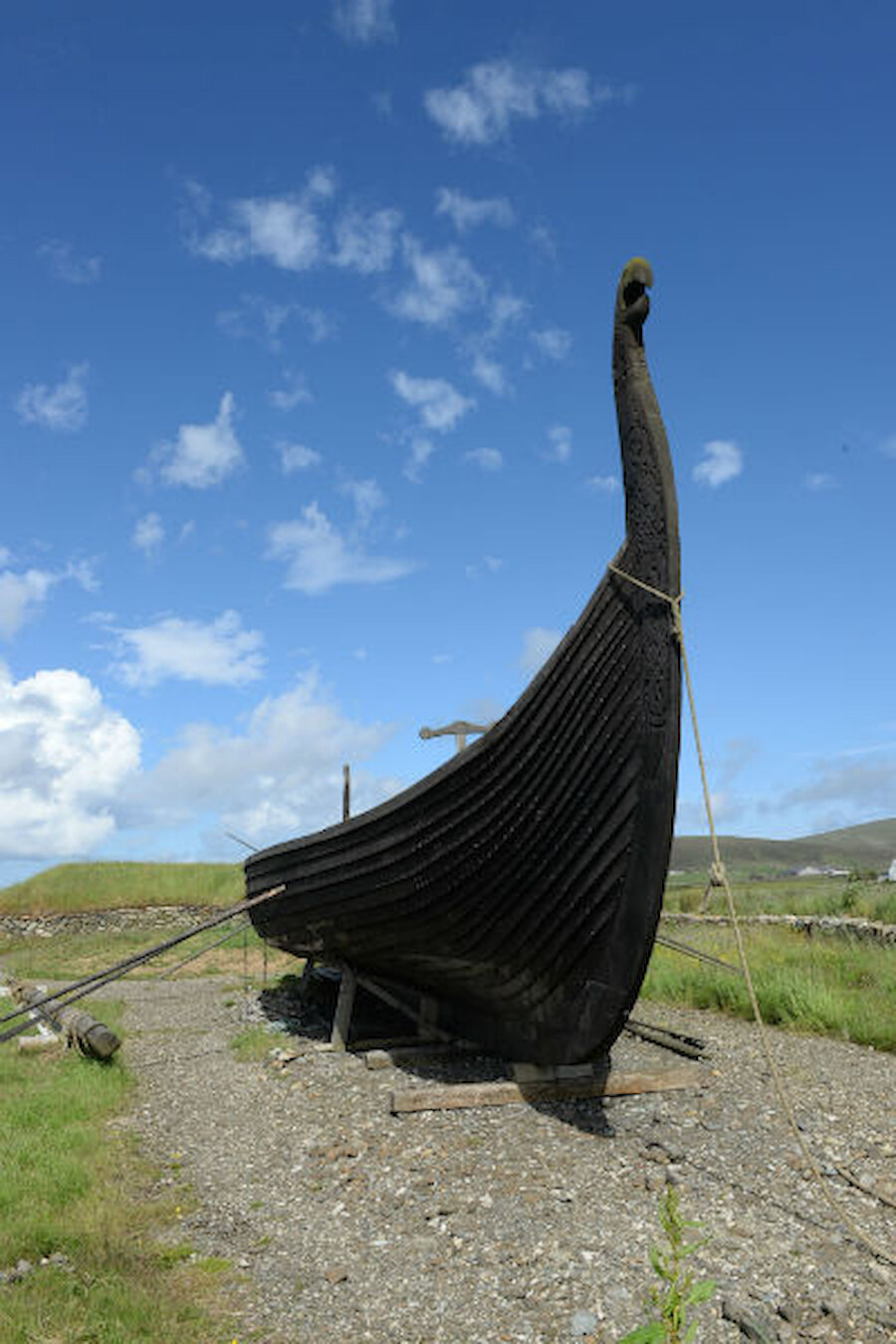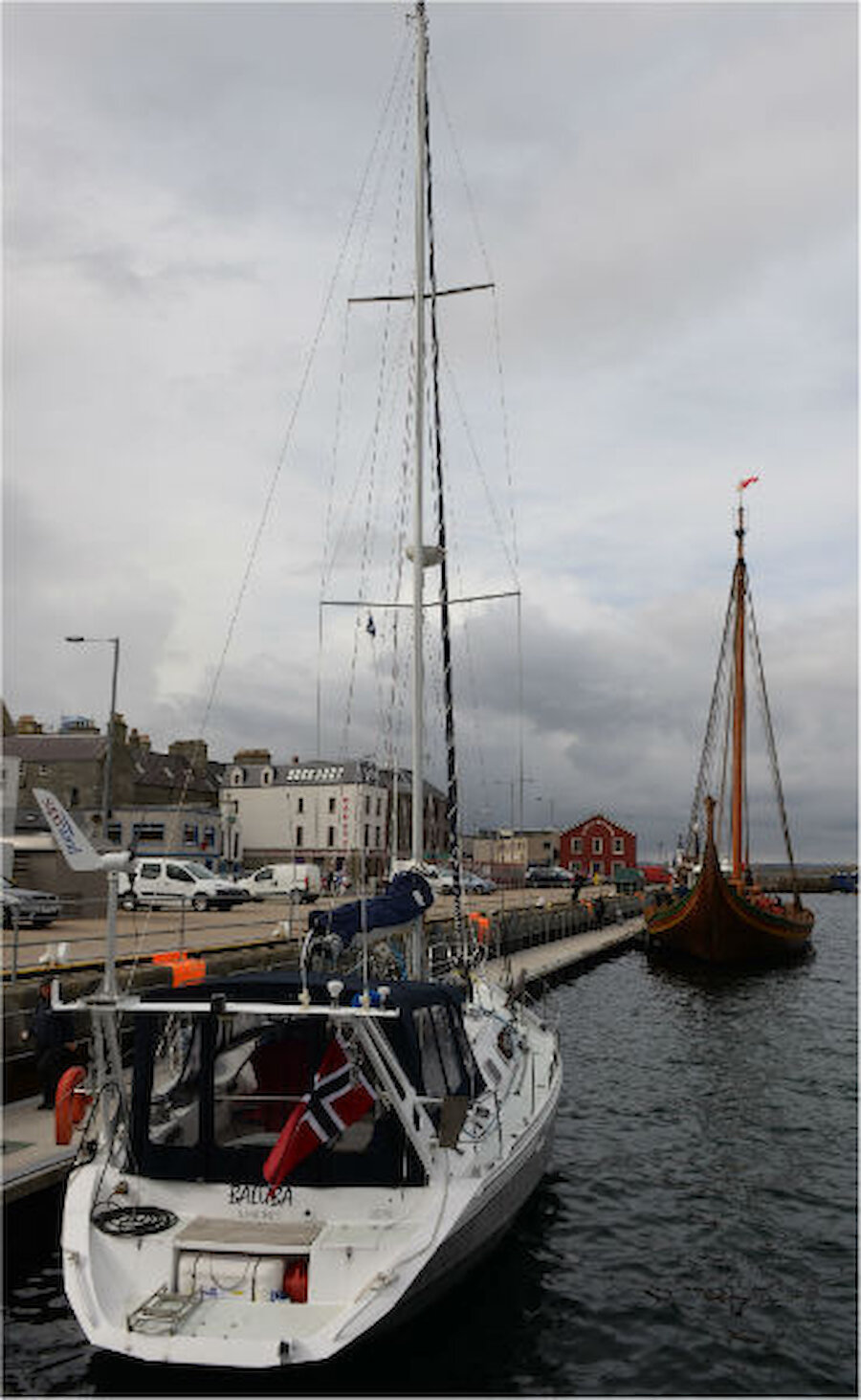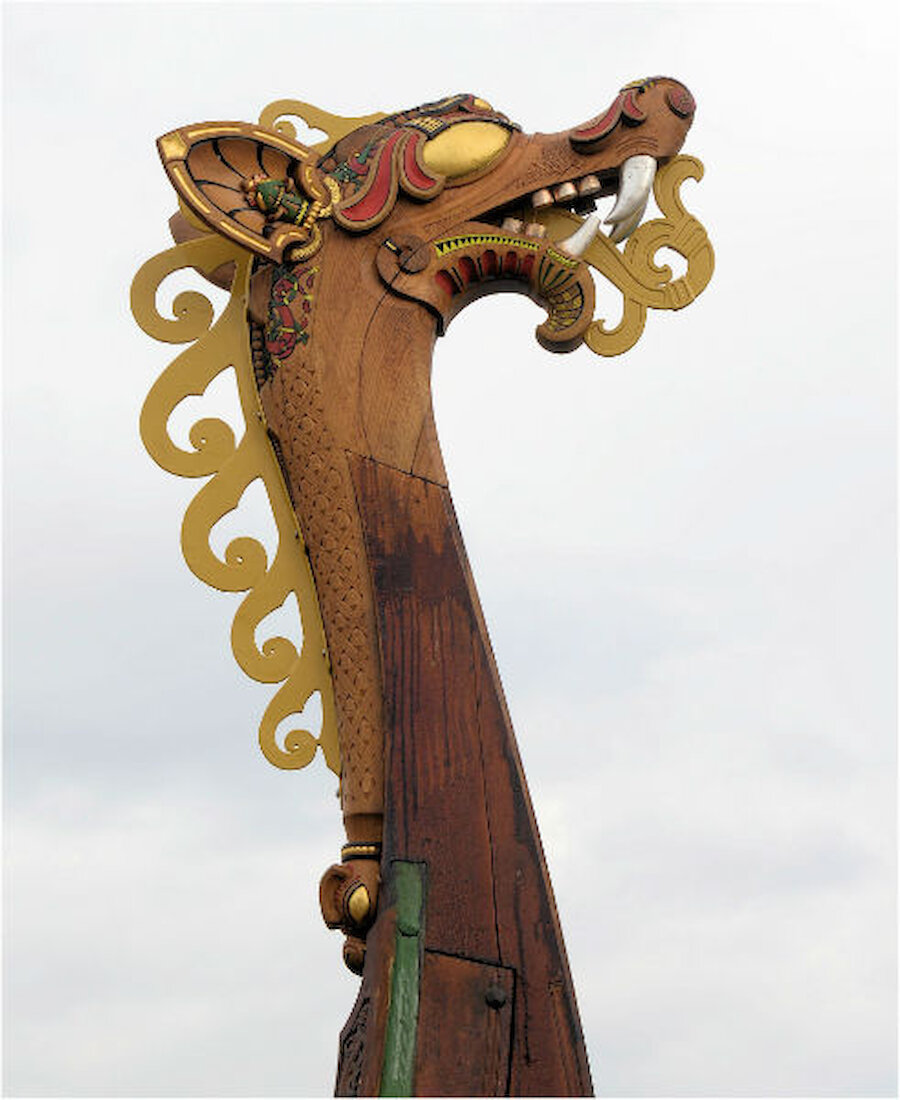Towards the end of April, the world’s largest Viking longship made an unscheduled stop in Lerwick en route to Iceland, Greenland and North America.
The ship, named Draken Harald Hårfagre, had set sail from its home port, Haugesund in Norway, on 26 April. The seas were rough, with winds of force 6 to gale force 8 in the northern North Sea at the time, and one of the shrouds (stay-ropes) on the mast broke. It was decided to put into Lerwick for repairs and the ship attracted a great deal of interest as she lay alongside in the centre of the town. The stopover also meant a welcome break for the crew from the cold conditions. Hardy Norsemen they might be, but they were reportedly finding the experience on the chilly side, living aboard in what is effectively a tent and enduring the snow and hail showers that were then affecting not just Shetland but much of Britain.


